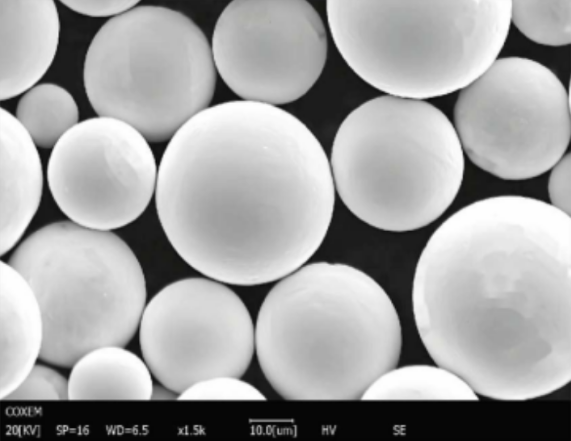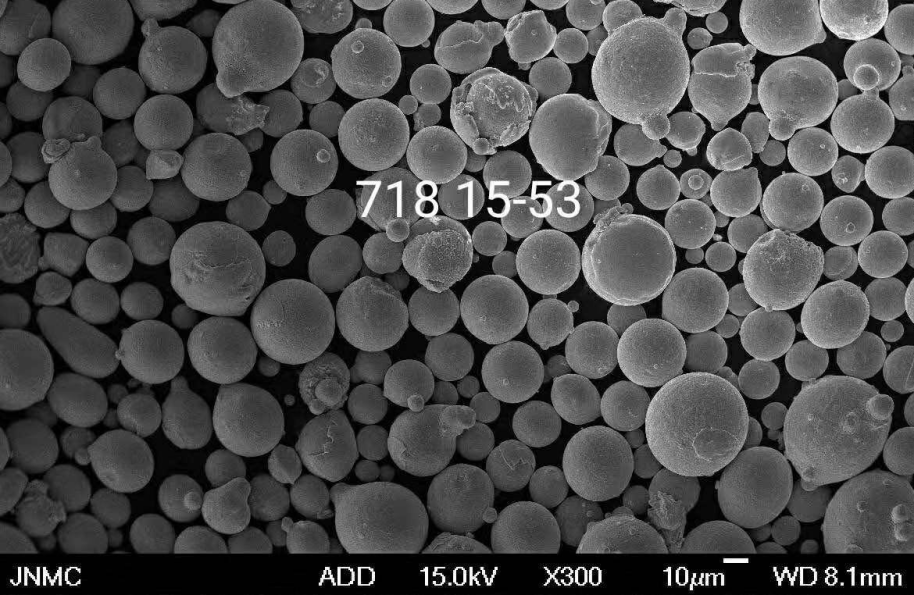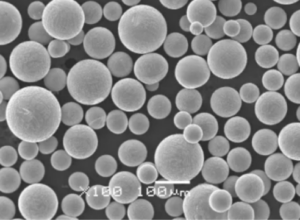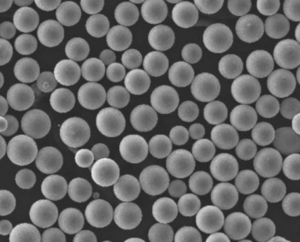Introdução às Soluções de Jato de Ligante de Metal
O mundo da manufatura passou por mudanças sísmicas com o advento da manufatura aditiva, comumente conhecida como impressão 3D. Dentro desse reino, o jato de ligante de metal se destaca como uma das tecnologias mais promissoras e versáteis. Mas o que exatamente é uma solução de jato de ligante de metale por que ela está causando impacto em setores que vão desde o aeroespacial à joalheria?
O jato de ligante de metal é um tipo de manufatura aditiva em que um agente de ligação é depositado seletivamente sobre uma camada de pó de metal, camada por camada, para formar uma peça sólida. Ao contrário de outros métodos de impressão 3D, ele não requer altas temperaturas ou feixes de laser para fundir o material. Em vez disso, ele se baseia no ligante e na sinterização subsequente para criar peças de metal robustas. Esse processo abre um mundo de possibilidades em termos de velocidade, custo-benefício e flexibilidade de material.
Neste guia abrangente, exploraremos as nuances das soluções de jato de ligante de metal, desde os tipos de pós metálicos disponíveis até as complexidades de sua composição, características e aplicações. Também mergulharemos em modelos específicos de pós metálicos, suas especificações, fornecedores e uma comparação completa de suas vantagens e limitações. Ao final deste artigo, você terá uma sólida compreensão de por que as soluções de jato de ligante de metal estão se tornando um divisor de águas na manufatura moderna.
Visão geral das Soluções de Jato de Ligante de Metal
Em termos simples, o jato de ligante de metal é uma forma de impressão 3D que usa pó de metal e um agente de ligação para criar peças de metal complexas. O processo envolve a distribuição de uma fina camada de pó de metal sobre uma plataforma de construção, após a qual uma cabeça de impressão deposita seletivamente um ligante que cola as partículas de pó. Esse processo é repetido camada por camada até que a peça esteja totalmente formada. Após a impressão, a peça passa por um processo de cura para endurecer o ligante, seguido de sinterização para fundir as partículas de metal, produzindo um componente de metal totalmente denso.
Essa tecnologia tem várias vantagens importantes em relação aos métodos de manufatura tradicionais, incluindo a capacidade de produzir geometrias complexas que seriam impossíveis ou extremamente caras de criar usando técnicas convencionais. Além disso, o jato de ligante de metal é mais rápido e econômico para produzir lotes pequenos a médios de peças.

Composição das Soluções de Jato de Ligante de Metal
A composição de uma solução de jato de ligante de metal é crucial para determinar a qualidade, resistência e durabilidade do produto final. Diferentes tipos de pós metálicos são usados, cada um com propriedades específicas que os tornam adequados para várias aplicações. Abaixo está uma análise detalhada dos pós metálicos comuns usados no jato de ligante, suas composições e suas características.
| Pó metálico | Composição | Características | Formulários |
|---|---|---|---|
| Aço inoxidável 316L | Ferro, cromo, níquel, molibdênio | Resistente à corrosão, boa resistência, ductilidade | Aeroespacial, dispositivos médicos, componentes automotivos |
| Inconel 625 | Níquel, cromo, molibdênio, nióbio | Resistência a altas temperaturas, resistente à corrosão | Aeroespacial, processamento químico, indústrias marítimas |
| Cobre | Cobre | Excelente condutividade elétrica e térmica | Componentes elétricos, trocadores de calor, itens decorativos |
| Titânio Ti6Al4V | Titânio, alumínio, vanádio | Alta relação resistência/peso, resistente à corrosão | Aeroespacial, implantes médicos, peças de corrida autom |
| Aço ferramenta M2 | Ferro, Tungstênio, Molibdênio, Crómio, Vanádio | Alta dureza, resistência ao desgaste, tenacidade | Ferramentas de corte, moldes, matrizes |
| Cobalto-cromo | Cobalto, cromo, molibdênio | Biocompatibilidade, resistente à corrosão, resistente ao desgaste | Implantes médicos, dispositivos dentários, pás de turbinas |
| Liga de níquel 718 | Níquel, cromo, ferro, molibdênio | Alta resistência, resistente à oxidação, soldabilidade | Motores a jato, turbinas de geração de energia, reatores nucleares |
| Alumínio AlSi10Mg | Alumínio, silício, magnésio | Leve, boa resistência, maquinabilidade | Peças automotivas, componentes aeroespaciais, eletrônicos de consumo |
| Bronze | Cobre, estanho | Boa resistência ao desgaste, maquinabilidade, apelo estético | Rolamentos, buchas, esculturas, instrumentos musicais |
| Ferro | Ferro | Alta resistência, propriedades magnéticas, econômico | Componentes estruturais, peças automotivas, dispositivos magnéticos |
Cada um destes pós traz algo único para a mesa, seja a resistência à corrosão do aço inoxidável ou a natureza leve do alumínio. A escolha do pó metálico depende em grande parte dos requisitos específicos da aplicação, como a necessidade de alta resistência, estabilidade térmica ou biocompatibilidade.
Características das Soluções de Jato de Aglutinante Metálico
Compreender as características do jato de aglutinante metálico é fundamental para aproveitar todo o seu potencial. O processo envolve várias etapas, cada uma das quais pode ser ajustada para produzir peças com propriedades específicas. Vamos detalhar essas características.
Espessura da camada
No jato de aglutinante metálico, a espessura da camada desempenha um papel crucial na determinação do acabamento da superfície e da precisão da peça final. Normalmente, a espessura da camada varia de 50 a 200 mícrons. Camadas mais finas levam a superfícies mais lisas e detalhes mais precisos, mas podem aumentar o tempo de impressão.
Velocidade de Impressão
O jato de aglutinante metálico é conhecido por sua alta velocidade de impressão em comparação com outras técnicas de manufatura aditiva. Isso ocorre porque não envolve a fusão ou fusão do pó metálico durante o processo de impressão, permitindo uma deposição mais rápida da camada.
Acabamento da superfície
O acabamento da superfície das peças produzidas por jato de aglutinante metálico é geralmente bom, mas pode exigir pós-processamento, como polimento ou usinagem, para obter um acabamento semelhante a um espelho. O tipo de aglutinante e pó, juntamente com a espessura da camada, influenciam a qualidade da superfície.
Propriedades do material
As propriedades do material das peças jateadas com aglutinante são comparáveis às das peças fabricadas tradicionalmente, especialmente após a sinterização. Propriedades como resistência à tração, dureza e condutividade térmica são amplamente determinadas pelo pó metálico usado e pelo processo de sinterização.
Geometrias complexas
Uma das características de destaque do jato de aglutinante metálico é sua capacidade de produzir geometrias altamente complexas que seriam impossíveis ou muito caras de criar usando métodos de fabricação convencionais. Isso inclui canais internos intrincados, estruturas de treliça e saliências sem a necessidade de estruturas de suporte.
Eficiência de custo
O jato de aglutinante metálico é mais econômico para tiragens de produção de pequeno a médio porte em comparação com métodos tradicionais como usinagem CNC ou fundição. A falta de ferramentas e a capacidade de produzir várias peças em um único trabalho de impressão reduzem ainda mais os custos.
| Característica | Detalhes |
|---|---|
| Espessura da camada | 50-200 mícrons |
| Velocidade de Impressão | Alta, sem necessidade de fusão |
| Acabamento da superfície | Bom, pode exigir pós-processamento |
| Propriedades do material | Comparável à fabricação tradicional, depende do pó e da sinterização |
| Geometrias complexas | Excelente capacidade, sem necessidade de estruturas de suporte |
| Eficiência de custo | Alta, especialmente para tiragens de produção de pequeno a médio porte |
Vantagens das Soluções de Jato de Aglutinante Metálico
O jato de aglutinante metálico traz várias vantagens para a mesa, tornando-o uma opção atraente para uma variedade de indústrias. Vamos explorar esses benefícios com mais detalhes.
Velocidade e Eficiência
Uma das principais vantagens do jato de aglutinante metálico é sua velocidade. Ao contrário de outros métodos de impressão 3D de metal que exigem a fusão e solidificação de cada camada, o jato de aglutinante pode imprimir camadas inteiras de uma só vez. Isso reduz significativamente os tempos de impressão, permitindo uma entrega mais rápida das peças.
: Com menores requisitos de energia e a capacidade de reutilizar o pó não ligado, o Jato de Aglutinante é frequentemente mais econômico do que outros métodos de impressão 3D.
O jato de aglutinante metálico é compatível com uma ampla gama de pós metálicos, dando aos fabricantes a flexibilidade de escolher o melhor material para suas necessidades específicas. Seja aço inoxidável para resistência à corrosão ou cobre para condutividade elétrica, existe um pó metálico que se adapta à situação.
Produção econômica
Para tiragens de produção de pequeno a médio porte, o jato de aglutinante metálico é mais econômico do que os métodos de fabricação tradicionais. A capacidade de imprimir várias peças em um único lote sem a necessidade de ferramentas ou moldes caros reduz ainda mais os custos.
Alto Detalhe e Precisão
O jato de aglutinante metálico se destaca na produção de peças com detalhes intrincados e alta precisão. Isso é particularmente útil para aplicações onde a precisão é crítica, como em componentes aeroespaciais ou dispositivos médicos.
Ecologicamente correto
Em comparação com os métodos de fabricação subtrativa, o jato de aglutinante metálico produz menos desperdício. Como é um processo aditivo, o material só é usado onde é necessário, reduzindo o consumo geral de recursos.
| Vantagens | Explicação |
|---|---|
| Velocidade e Eficiência | Imprime camadas inteiras de uma só vez, reduzindo o tempo de impressão |
| : Com menores requisitos de energia e a capacidade de reutilizar o pó não ligado, o Jato de Aglutinante é frequentemente mais econômico do que outros métodos de impressão 3D. | Compatível com vários pós metálicos |
| Produção econômica | Sem necessidade de ferramentas ou moldes caros |
| Alto Detalhe e Precisão | Produz peças intrincadas com alta precisão |
| Ecologicamente correto | Menos desperdício produzido em comparação com os métodos subtrativos |






Aplicações das Soluções de Jato de Aglutinante Metálico
A versatilidade do jato de aglutinante metálico o torna adequado para uma ampla gama de aplicações em vários setores. Abaixo está uma visão geral de alguns dos principais setores onde essa tecnologia está causando um impacto significativo.
| Setor | Aplicativo | Benefícios |
|---|---|---|
| Aeroespacial | Componentes estruturais leves, peças complexas do motor | Relação resistência-peso elevada, geometrias complexas |
| Automotivo | Protótipos, peças personalizadas, pequenas tiragens de produção | Econômico, entrega rápida, versatilidade de material |
| Médico | Implantes, instrumentos cirúrgicos, próteses personalizadas | Biocompatibilidade, alta precisão, soluções específicas para o paciente |
| Joias | Designs intrincados, peças personalizadas, pequenos lotes | Alto detalhe, econômico, opções de materiais como ouro e prata |
| Energia | Pás de turbinas, bicos de combustível, trocadores de calor | Resistência a altas temperaturas, geometrias complexas |
| Industrial | Ferramentas, moldes, gabaritos, acessórios | Durabilidade, resistência ao desgaste, economia de custos |
As aplicações de soluções de jato de aglutinante metálico são vastas, desde a criação de componentes leves para aeronaves até a produção de joias personalizadas com designs intrincados. A capacidade de criar peças complexas com alta precisão torna essa tecnologia indispensável na fabricação moderna.
Especificações e Padrões para Soluções de Jato de Aglutinante Metálico
Ao selecionar uma solução de jato de aglutinante metálico, é crucial entender as especificações e os padrões que regem a qualidade e o desempenho dos materiais e processos. Abaixo está uma tabela que descreve algumas das principais especificações, tamanhos, graus e padrões associados ao jato de aglutinante metálico.
| Especificação/Padrão | Detalhes |
|---|---|
| ASTM F2924 | Especificação padrão para fabricação aditiva de titânio-6 alumínio-4 vanádio com fusão em leito de pó |
| ASTM F3055 | Especificação padrão para fabricação aditiva de liga de níquel com fusão em leito de pó |
| ISO/ASTM 52900 | Terminologia padrão para fabricação aditiva |
| Espessura da camada | 50-200 mícrons, dependendo do material e da aplicação |
| Densidade da peça | Tipicamente 95-99% dos materiais forjados após a sinterização |
| Rugosidade da superfície | Tipicamente 5-15 µm, dependendo do pós-processamento |
| Precisão dimensional | ±0,1-0,3 mm, dependendo do tamanho e geometria da peça |
| Tamanho da partícula de pó | Tipicamente 15-45 µm, afeta a fluidez e a densidade de embalagem |
Essas especificações e padrões garantem que o processo de jato de aglutinante metálico produza peças que atendam aos requisitos necessários de qualidade e desempenho. É importante escolher uma solução que esteja alinhada com esses padrões para garantir a confiabilidade e a durabilidade do produto final.
Comparação das Soluções de Jato de Aglutinante Metálico
Ao considerar o jato de aglutinante metálico para suas necessidades de fabricação, é essencial comparar as diferentes soluções disponíveis. Abaixo está uma análise comparativa dos vários pós metálicos e sua adequação para diferentes aplicações.
| Pó metálico | Vantagens | Limitações | Mais adequado para |
|---|---|---|---|
| Aço inoxidável 316L | Resistência à corrosão, boas propriedades mecânicas | Mais caro que algumas alternativas | Aeroespacial, dispositivos médicos, ambientes marinhos |
| Inconel 625 | Resistência a altas temperaturas, excelente resistência à corrosão | Alto custo, difícil de usinar | Motores a jato, processamento químico, reatores nucleares |
| Cobre | Excelente condutividade elétrica e térmica, maleabilidade | Menor resistência em comparação com os aços, propenso à oxidação | Componentes elétricos, trocadores de calor, encanamento |
| Titânio Ti6Al4V | Alta relação resistência/peso, biocompatibilidade | Caro, requer manuseio cuidadoso | Implantes médicos, componentes aeroespaciais, peças de corrida |
| Aço ferramenta M2 | Alta dureza e resistência ao desgaste, tenacidade | Requer pós-processamento como tratamento térmico | Ferramentas de corte, moldes, matrizes |
| Cobalto-cromo | Biocompatibilidade, resistência ao desgaste, alta resistência | Alto custo, difícil de usinar | Implantes médicos, próteses dentárias, pás de turbinas |
| Liga de níquel 718 | Alta resistência, resistência à oxidação, soldabilidade | Caro, difícil de processar | Motores a jato, geração de energia, petróleo e gás |
| Alumínio AlSi10Mg | Leve, boa resistência, facilidade de usinagem | Menor resistência em comparação com os aços, requer anodização para resistência à corrosão | Peças automotivas, eletrônicos de consumo, estruturas leves |
| Bronze | Boa resistência ao desgaste, maquinabilidade, apelo estético | Propenso a manchas, propriedades mecânicas inferiores em comparação com o aço | Rolamentos, buchas, itens decorativos |
| Ferro | Alta resistência, propriedades magnéticas, baixo custo | Suscetível à corrosão, menor resistência à fadiga em comparação com as ligas | Componentes estruturais, peças automotivas, dispositivos magnéticos |
Esta comparação ajuda a identificar o melhor pó metálico para aplicações específicas, equilibrando fatores como custo, propriedades do material e facilidade de processamento.
Fornecedores e Detalhes de Preços para Soluções de Jato de Aglutinante Metálico
Encontrar o fornecedor certo é essencial para garantir pós metálicos de alta qualidade e equipamentos de jato de aglutinante confiáveis. Abaixo está uma tabela que lista alguns dos principais fornecedores do setor, juntamente com detalhes de preços de seus produtos.
| Fornecedor | Pós metálicos disponíveis | Faixa de preço (por kg) | Localização | Local na rede Internet |
|---|---|---|---|---|
| Höganäs AB | Aço inoxidável, cobre, bronze, ferro | $50-$200 | Suécia | hoganas.com |
| Aditivo GKN | Inconel, alumínio, titânio, aço para ferramentas | $100-$400 | Alemanha | gknpm.com |
| Tecnologia Carpenter | Ligas de níquel, cromo-cobalto, aço para ferramentas | $150-$500 | EUA | cartech.com |
| Manufatura aditiva da Sandvik | Aço inoxidável, titânio, cobre, ferro | $70-$300 | Suécia | additive.sandvik.com |
| Epson Atmix | Alumínio, bronze, aço inoxidável | $60-$250 | Japão | epson.jp |
| AP&C (uma empresa da GE Additive) | Ligas de titânio, alumínio e níquel | $200-$600 | Canadá | advancedpowders.com |
O preço pode variar com base em fatores como o tipo de pó metálico, a quantidade necessária e a localização do fornecedor. É aconselhável solicitar orçamentos de vários fornecedores para garantir preços e disponibilidade competitivos.
Prós e contras das soluções de jateamento com aglutinante metálico
Como qualquer tecnologia de fabricação, o jateamento com aglutinante metálico tem seus prós e contras. Compreendê-los pode ajudá-lo a tomar uma decisão informada sobre se este método é adequado para suas necessidades de produção.
| Prós | Contras |
|---|---|
| Alta velocidade de impressão | Imprime camadas rapidamente sem precisar de fusão |
| Versatilidade de materiais | Compatível com uma ampla gama de pós metálicos |
| Eficiência de custo | Mais acessível para pequenas e médias tiragens de produção |
| Geometrias complexas | Capaz de produzir designs intrincados e estruturas internas |
| Ecologicamente correto | Menos desperdício produzido, o material só é usado onde necessário |
| Menor resistência em comparação com os métodos tradicionais | Pode exigir pós-processamento para obter as propriedades mecânicas desejadas |
| O acabamento da superfície pode exigir pós-processamento | Etapas adicionais, como polimento ou usinagem, podem ser necessárias |
| Disponibilidade limitada de material | Nem todos os metais são adequados para jateamento com aglutinante |
Ao ponderar esses prós e contras, os fabricantes podem determinar se o jateamento com aglutinante metálico se alinha com seus objetivos de produção, seja velocidade, custo ou capacidade de produzir peças complexas.

perguntas frequentes
Aqui estão algumas perguntas frequentes sobre soluções de jato de aglutinante metálico, juntamente com suas respostas para ajudar a esclarecer quaisquer dúvidas restantes.
| Pergunta | Resposta |
|---|---|
| O que é jateamento com aglutinante metálico? | O jateamento com aglutinante metálico é um processo de fabricação aditiva que usa um agente de ligação para fundir o pó metálico em peças sólidas. |
| Como o jateamento com aglutinante metálico difere de outros métodos de impressão 3D? | Ao contrário de outros métodos, o jateamento com aglutinante metálico não requer a fusão do pó. Em vez disso, ele usa um processo de ligação e sinterização, que permite uma impressão mais rápida e mais opções de material. |
| Quais metais podem ser usados no jateamento com aglutinante? | Os metais comuns incluem aço inoxidável, titânio, Inconel, cobre e alumínio. A escolha do metal depende das propriedades desejadas da peça final. |
| O pós-processamento é necessário no jateamento com aglutinante metálico? | Sim, etapas de pós-processamento como sinterização, polimento ou usinagem são frequentemente necessárias para obter as propriedades mecânicas e o acabamento da superfície desejados. |
| Quão fortes são as peças feitas com jateamento com aglutinante metálico? | A resistência das peças jateadas com aglutinante é comparável à das peças fabricadas tradicionalmente, especialmente após a sinterização. No entanto, eles podem exigir tratamento térmico adicional para atingir a resistência ideal. |
| Quais indústrias se beneficiam mais do jateamento com aglutinante metálico? | Indústrias como aeroespacial, automotiva, médica e joalheria se beneficiam da tecnologia devido à sua capacidade de produzir peças complexas e de alta precisão. |
| O jateamento com aglutinante metálico é ecologicamente correto? | Sim, é considerado mais ecologicamente correto do que a fabricação subtrativa tradicional porque produz menos desperdício. |
| Como o custo do jateamento com aglutinante metálico se compara a outros métodos de fabricação? | O jateamento com aglutinante metálico é geralmente mais econômico para pequenas e médias tiragens de produção, particularmente quando comparado a métodos como usinagem CNC ou fundição. |
| O jateamento com aglutinante metálico pode produzir peças grandes? | Embora o jateamento com aglutinante metálico seja normalmente usado para peças pequenas e médias, os avanços na tecnologia estão expandindo o potencial para construções maiores. |
Conclusão
O jateamento com aglutinante metálico representa um avanço significativo na fabricação aditiva, oferecendo uma combinação de velocidade, flexibilidade de material e a capacidade de produzir geometrias complexas. À medida que as indústrias continuam a explorar seu potencial, essa tecnologia está prestes a se tornar uma pedra angular da fabricação moderna, impulsionando a inovação e a eficiência em vários setores.

